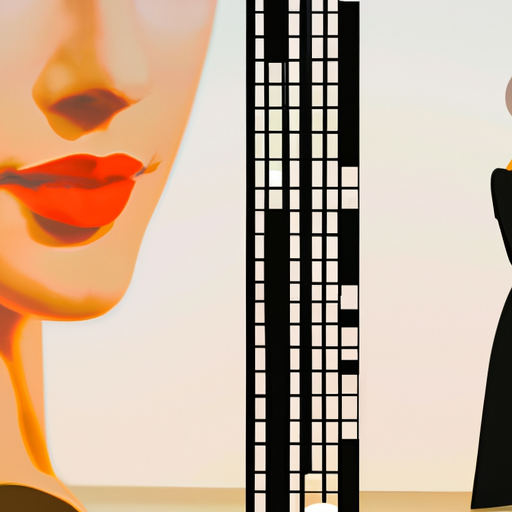
-
Table of Contents
Mastering Composition: Fine Art Techniques for Designers

Composition is a fundamental aspect of any visual art form, including design. It is the arrangement of elements within a frame that creates a sense of balance, harmony, and visual interest. Mastering composition is crucial for designers as it can greatly enhance the impact and effectiveness of their work. In this article, we will explore fine art techniques that designers can apply to improve their composition skills.
The Rule of Thirds
One of the most well-known and widely used composition techniques is the rule of thirds. The rule of thirds divides the frame into a grid of nine equal parts, with two horizontal and two vertical lines intersecting at four points. These points are known as the “power points” or “points of interest.” By placing key elements along these lines or at the intersections, designers can create a more visually appealing and balanced composition.
For example, imagine a website design where the main call-to-action button is placed at one of the power points. This placement draws the viewer’s attention and creates a focal point, making it more likely for the user to take the desired action.
Leading Lines
Leading lines are another powerful composition technique that can guide the viewer’s eye through the design. These lines can be actual lines within the artwork or implied lines created by the arrangement of elements. By strategically placing these lines, designers can create a sense of movement, depth, and visual flow.
For instance, in a website design, the use of diagonal lines can lead the viewer’s eye from one section to another, creating a seamless browsing experience. Similarly, in a poster design, curved lines can be used to guide the viewer’s gaze from the headline to the main image and then to the supporting text.
Balance and Symmetry
Balance and symmetry play a crucial role in creating visually pleasing compositions. Balance refers to the distribution of visual weight within a design, while symmetry involves creating a mirror-like reflection of elements on either side of a central axis.
There are three types of balance: symmetrical balance, asymmetrical balance, and radial balance. Symmetrical balance is achieved when elements are evenly distributed on either side of a central axis, creating a sense of stability and formality. Asymmetrical balance, on the other hand, involves the distribution of elements in a way that creates a sense of equilibrium despite the lack of symmetry. Radial balance is achieved when elements radiate from a central point, creating a circular or spiral arrangement.
Designers can use these different types of balance to create compositions that evoke different emotions or convey specific messages. For example, a symmetrical layout may be suitable for a corporate website, while an asymmetrical layout may be more appropriate for a creative agency’s portfolio.
Contrast and Emphasis
Contrast is a powerful tool that designers can use to create visual interest and emphasize certain elements within a composition. Contrast can be achieved through variations in color, size, shape, texture, or value. By juxtaposing elements with contrasting characteristics, designers can create a focal point and guide the viewer’s attention.
For instance, in a poster design, using a bold and vibrant color for the headline against a muted background can create a strong contrast and draw attention to the message. Similarly, in a website design, using a larger font size for the main heading compared to the subheadings can create a visual hierarchy and emphasize the importance of the headline.
Negative Space
Negative space, also known as white space, is the empty space surrounding the main elements in a composition. It is not just an absence of content but an essential design element that can enhance the overall composition. By strategically using negative space, designers can create a sense of balance, clarity, and focus.
For example, in a minimalist logo design, the use of ample negative space can make the logo appear clean, elegant, and memorable. In a website layout, negative space can help separate different sections and improve readability.
Case Study: Apple’s Product Packaging
Apple is renowned for its sleek and minimalist product packaging, which exemplifies the principles of composition. The company’s packaging designs often feature a clean layout with a focus on negative space, creating a sense of elegance and sophistication. The use of the rule of thirds is evident in the placement of key elements, such as the product image and the Apple logo.
Furthermore, Apple’s packaging designs often incorporate leading lines to guide the viewer’s eye and create a sense of movement. For example, the curves of the MacBook box lead the viewer’s gaze from the top to the bottom, highlighting the product’s slim profile.
Statistics on the Impact of Composition in Design
- A study conducted by the Nielsen Norman Group found that users’ first impressions of a website are 94% design-related. This highlights the importance of composition in creating a positive user experience.
- In a survey conducted by Adobe, 66% of respondents stated that they prefer visually appealing content over plain content. Effective composition plays a significant role in creating visually appealing designs.
- A study published in the Journal of Marketing Research found that consumers perceive products with symmetrical packaging as more aesthetically pleasing and of higher quality. This demonstrates the impact of balance and symmetry in design composition.
Summary
Mastering composition is essential for designers to create visually appealing and effective designs. By applying fine art techniques such as the rule of thirds, leading lines, balance and symmetry, contrast and emphasis, and negative space, designers can elevate their compositions to a new level. The case study of Apple’s product packaging exemplifies how these techniques can be applied in real-world designs. Additionally, statistics highlight the impact of composition on user perception and preference. By incorporating these techniques and principles into their work, designers can create compelling and engaging designs that captivate their audience.
